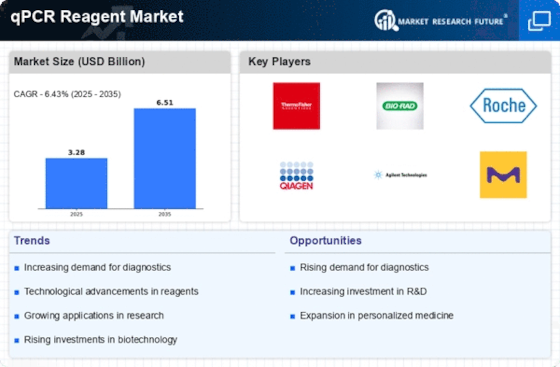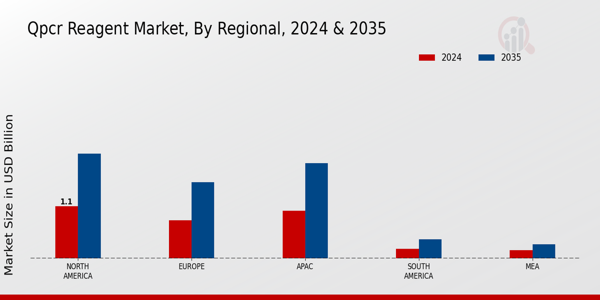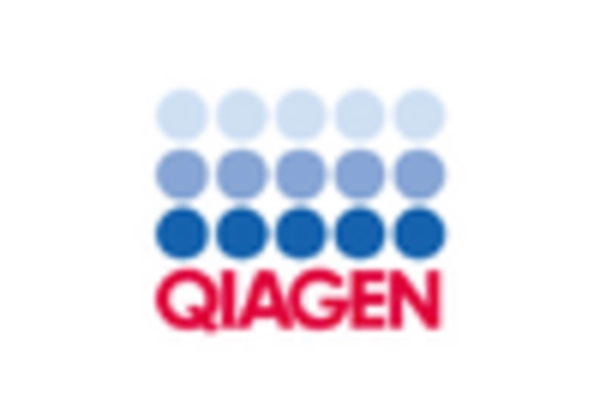Advancements in Genetic Research
The qPCR Reagent Market is significantly influenced by advancements in genetic research. As the scientific community delves deeper into genomics and molecular biology, the demand for high-quality qPCR reagents is expected to rise. Recent studies indicate that The qPCR Reagent is projected to reach substantial figures, with qPCR being a pivotal technology in various research applications. This growth is fueled by the increasing focus on personalized medicine and targeted therapies, which rely heavily on precise genetic analysis. The qPCR Reagent Market stands to benefit from these trends, as researchers seek reliable and efficient reagents to support their innovative studies.
Emergence of Point-of-Care Testing
The qPCR Reagent Market is being shaped by the emergence of point-of-care testing solutions. As healthcare providers seek to deliver rapid diagnostic results, the integration of qPCR technology into point-of-care settings is becoming increasingly prevalent. This shift is supported by advancements in portable qPCR devices, which facilitate on-site testing. Recent market analyses suggest that the point-of-care testing market is on an upward trajectory, thereby enhancing the demand for qPCR reagents. The qPCR Reagent Market is expected to capitalize on this trend, as the need for timely and accurate diagnostics continues to grow.
Growing Investment in Biotechnology
The qPCR Reagent Market is witnessing a boost from the growing investment in biotechnology. As governments and private entities allocate more resources to biotechnological advancements, the demand for qPCR reagents is likely to increase. Recent reports suggest that the biotechnology sector is experiencing robust growth, with significant funding directed towards research and development. This influx of capital is expected to enhance the capabilities of laboratories, leading to a higher demand for qPCR reagents. The qPCR Reagent Market is thus positioned to thrive, as the intersection of biotechnology and molecular diagnostics continues to evolve.
Increased Focus on Food Safety Testing
The qPCR Reagent Market is also benefiting from an increased focus on food safety testing. With rising concerns over foodborne illnesses and contamination, regulatory bodies are emphasizing the need for stringent testing protocols. qPCR technology offers rapid and accurate detection of pathogens in food products, making it an essential tool for food safety laboratories. Recent statistics indicate that the food safety testing market is expanding, which in turn drives the demand for qPCR reagents. As food manufacturers and regulatory agencies prioritize consumer safety, the qPCR Reagent Market is likely to see sustained growth.
Rising Prevalence of Infectious Diseases
The qPCR Reagent Market is experiencing a notable surge due to the increasing prevalence of infectious diseases. As healthcare systems worldwide strive to enhance diagnostic capabilities, the demand for qPCR reagents has escalated. According to recent data, the incidence of infectious diseases has risen, prompting healthcare providers to adopt advanced diagnostic tools. This trend is likely to continue, as the need for rapid and accurate detection methods becomes paramount. The qPCR technology, known for its sensitivity and specificity, is becoming a cornerstone in clinical laboratories. Consequently, the qPCR Reagent Market is poised for growth, driven by the urgent need for effective disease management and surveillance.


















Leave a Comment